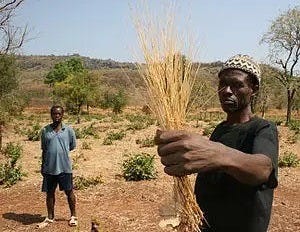As agriculture quietly transformed human life in the Fertile Crescent and the Americas, parallel revolutions in plant cultivation were taking place thousands of miles away. Across Asia and Africa, people were also learning to observe, select, plant, and save seeds, laying the groundwork for some of the most diverse and enduring food systems on Earth.
From rice paddies in the Yangtze River basin, to millet fields in West Africa, to taro terraces in the South Pacific, the miracle of the seed was unfolding again and again, in different climates, in different soils, and with a remarkable variety of results.
The Birth of Rice Cultivation in China
One of the oldest continuously cultivated crops in human history is rice. Archaeological findings place its origins at least 9,000 years ago in what is now central and southern China, where wild rice once grew along the floodplains of the Yangtze River. Ancient farmers discovered how to propagate it, eventually developing sophisticated irrigation systems, transplanting techniques, and water management practices that made rice agriculture both high-yield and sustainable.
Over time, rice became more than just food. It became the centerpiece of an entire civilization. It shaped settlement patterns, seasonal calendars, festivals, and even language. The word “meal” in many East and Southeast Asian languages is synonymous with “rice.”
There are now more than 40,000 varieties of cultivated rice, adapted to every kind of condition - flooded paddies, dry highlands, salty soils, and drought-prone zones. The evolution of rice is a testament to how deeply humans can partner with plants to meet their needs.
Millet, Sorghum, and Africa’s Agricultural Heritage
In sub-Saharan Africa, other crops were stepping into the spotlight. Long before corn arrived from the Americas, Indigenous African farmers were cultivating millet, sorghum, and fonio - grains that thrive in poor soils and harsh, dry climates. These crops were essential for food security and are now being re-evaluated globally for their resilience in a warming world.
Millets, in particular, are rich in protein, quick to mature, and remarkably drought tolerant. Today, the United Nations is urging their wider use as climate-smart staples.
Africa’s seed story doesn’t stop with grains. The continent is also home to early domestication of crops like cowpeas, okra, and yam, plants that remain central to regional cuisines and livelihoods.
Seeds Across the Islands
The peoples of the Pacific, too, developed ingenious seed systems. Using seeds, tubers, and cuttings, they carried their crops from island to island across thousands of miles of ocean. Taro, breadfruit, and sweet potatoes became cornerstones of culture and diet in Polynesia and beyond. These communities practiced highly sustainable farming using terraced wetlands, intercropping, and rotational planting, techniques that modern agriculture continues to learn from today.
A Global Pattern of Discovery
What we see, again and again, is not one story of agriculture, but many. In China, in Africa, in Oceania, people observed plants, tested possibilities, saved the best seeds, and built entire societies on what they learned. The miracle of the seed is not a single flash of discovery. It is a mosaic of human relationships with land and life.
PBL Project Idea: World Seeds Comparison Challenge
Students work in teams to research traditional staple crops from different global regions (rice, millet, taro, yam, sorghum, etc.) and compare:
How they were first cultivated
The agricultural systems used
Nutritional value and cultural significance
Modern relevance in light of climate change
Teams present their findings through an interactive visual display or digital presentation, then propose which of these crops could be reintroduced or promoted in their own region for food security or sustainability.
Optional: If possible, grow sample plants from seeds or tubers and track progress, soil needs, and water use.


